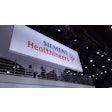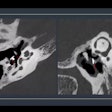Americans worried about the nuclear crisis in Japan have cleared store shelves of potassium iodide as they seek protection from radiation-laced fallout. The frenzy has also drawn attention to specialized drugs and nutritional formulas designed to protect individuals from environmental radiation -- and prevent harm from medical imaging and radiation therapy.
Last week as the accident at Japan's Fukushima reactors drew increasingly intense media coverage, California health authorities were inundated with calls about radiation headed for California's shores from people upset "that they can't find potassium iodide in pharmacies and their physicians won't write them a prescription," said Judith Alsop, director of the Sacramento division of the California Poison Control System. "They feel they must do something."
The quest for potassium iodide, while perhaps misguided, points to a desire for a solution to the radiation dose dilemma that's as simple as a popping a pill. Could this dynamic also be employed to address concerns over another source of low-level radiation dose: medical imaging?
Protection from medical sources of radiation, as well as exposure from nuclear accidents, is the idea behind a handful of companies that are developing radiation protection solutions they hope will be far more effective than potassium iodide. Although these products have yet to come into widespread use in the U.S., the attention given to potassium iodide-based protection could mark a shift in the winds.
Three agents have been subjected to extensive study: One is an antioxidant formula for general use in high-radiation environments, and another is being developed by the U.S. military for use in high-risk missions. The third is a drug that's been fast-tracked by the U.S. Food and Drug Administration (FDA) for testing in both medical and defense applications.
BioShield
BioShield, a mix of natural antioxidant compounds developed by Premier Micronutrient (PNC) and featured in a 2009 AuntMinnie.com article, is billed as the first patented formulation designed to address oxidative stress caused by radiation.
Several studies in animals, cadaver parts, and, most recently, humans have found BioShield to be safe and effective for decreasing free radicals, unstable cells that can cause DNA damage leading to the possible development of cancer.
In a telephone interview, Dr. James Ehrlich, PNC's medical advisor, told AuntMinnie.com that the company is definitely not recommending that the general public start taking the formula as a precautionary measure against distant radiation leaks -- but that several other applications are definitely warranted for the product, which sells for about $5 per dose.
"We think it should be used before every CT scan, by frequent flyers, by people who live in high-radon homes -- certainly nuclear power plant workers and flight attendants," he said. "These are the kind of people we should be concentrating on."
Following years of mostly animal and cadaver studies using the product, investigators will soon release preliminary results of an encouraging new study conducted in humans, Ehrlich said.
In their research, Dr. Michael Küfner and colleagues from the University of Erlangen tested the radiation-protection powers of BioShield, both in vivo and in vitro.
As in several of the research group's previous studies, DNA damage was measured by means of immunofluorescence microscopy, which allows the counting of DNA double-strand breaks (DSBs) in the blood following exposure to ionizing radiation. Ingesting BioShield before scanning in humans led to a reduction of 53% in DSBs compared to identical scans acquired without the product," Ehrlich said, adding that the timing of the dose appears to be important in maximizing the protective effect.
"During the past month, my laboratory has demonstrated that BioShield significantly decreases the number of DSBs in both in vitro and in vivo studies," Küfner wrote. "Our research clearly proves that a single dose of BioShield-Radiation taken before exposure confers significant protection from this kind of DNA lesion introduced by ionizing radiation that individuals normally encounter for diagnostic studies."
Still, adoption of the product by radiology departments has been slow, Ehrlich said, mostly because radiologists are loath to give the impression that their scans can potentially cause cancer, he said.
As it stands, radiologists most often buy the formula not for their practices but "to give to their families," Ehrlich said.
Ex-Rad
Another promising radiation-protection solution is being developed by the U.S. Department of Defense. The drug, known as Ex-Rad, is a small-molecule kinase inhibitor aimed at modifying cell cycle distribution patterns in cancer cells subjected to radiation therapy, researchers reported in a 2009 study. To date there are three published studies attesting to Ex-Rad's effectiveness for protecting cells against the damaging effects of radiation.
"It can be given up to 24 hours before going into a hot zone where there are high levels of radiation, and, of course, it can be taken afterward as well," said Van Hipp, a consultant from American Defense International who is familiar with the project.
The compound has been tested primarily in animals and in human organs. One study showed an 88% survival rate following subcutaneous injection of 500 mg/kg of Ex-Rad at 24 hours and at 15 minutes before gamma irradiation with 8.0 Gy, a dose that would normally be lethal even in humans.
Sanchita Ghosh and colleagues from the Armed Forces Radiobiology Research Institute also studied the compound's radioprotective efficacy in lung fibroblasts (HFL-1), skin fibroblasts (AG1522), and human umbilical vein endothelial cells (HUVECs).
"Colony-forming assays indicated that Ex-Rad protected cells from radiation damage after exposure to ... gamma radiation," they wrote of Ex-Rad. "A study using single-cell gel electrophoresis (SCGE; also known as the alkaline comet assay) showed that Ex-Rad protected cells from radiation-induced DNA damage" (Radiation Research, February 17, 2009, Vol. 171:2, pp. 173-179).
Another study tested the compound's efficacy in a range of doses and dose-timing scenarios in animals. Both injectable and oral forms of the compound are being developed "as a radioprotectant and a radiation-mitigating agent in wider military and civilian populations," reported Amy Chun et al this month in Biopharmaceutics and Drug Disposition (Vol. 32:2, pp. 99-111).
According to Hipp, Ex-Rad is not only proving itself safe and effective, there are no known side effects. The FDA is currently considering approval of the drug for use in high-radiation environments. The investigators were unable to respond to a list of questions about Ex-Rad by press time.
A radiation countermeasures symposium to be hosted by the Armed Forces Radiobiology Research Institute will be held on June 15.
CBLB502
Another injectable drug intended for use both in medical applications and after accidental radiation exposure is being developed by Cleveland BioLabs. CBLB502 is a bioengineered derivative of a microbial protein derived from flagellin of Salmonella bacteria.
CBLB502 reduces injury from acute stresses, such as radiation and chemotherapy, by mobilizing several natural cell protective mechanisms, including inhibition of programmed cell death (apoptosis), reduction of oxidative damage, and induction of regeneration-promoting cytokines, according to the firm.
The drug is injected intramuscularly and was initially developed as a prophylaxis for medical treatment using ionizing radiation.
The compound is being developed under the FDA's animal efficacy rule, which allows testing in relevant animal models, "in our case in rodents and nonhuman primates," when human testing would be unethical or impractical, according to company spokesperson Rachel Levine.
"We're testing human safety and tolerability only in exposure to the drug, and you can characterize side effect profiles and biomarkers," Levine explained in an interview. And even though the protective effects against radiation exposure can't be tested in humans, the appropriateness of the animal models chosen for research can be assessed by looking at biomarker results in both humans and animals to gauge the similarity of their response to the drug.
Evidence of CBLB502's activity in animal models was published in Science in April 2008 (Vol. 320, pp. 226-230), the firm said in a statement. In that study, data from 50 healthy human volunteers demonstrated that CBLB502 was "generally well tolerated" and that biomarker results corresponded to activity in animal models following lethal total body irradiation.
Human testing has focused on evaluating the drug's tolerability and side effects, as well as gauging the appropriateness of the animal models based on the biomarker response in humans.
"We have characterized side effects in 50 healthy human subjects" and found the drug to be "generally well tolerated," Levine said. The principal side effect is a "flu-like syndrome which is consistent with the action and activity of the drug. Effects have generally been transient and resolving in a matter of hours," she said.
It has also been tested in animals to evaluate its ability to reduce the side effects of the chemotherapeutic drug cisplatinum (Platinol). The company also aims to test CBLB502 for reducing the occurrence and severity of mucositis, which occurs in head and neck cancer patients receiving both radiation and chemotherapy, according to the statement.
"Our goal is to ultimately try to help cancer patients," Levine said. At the same time, the company hopes to learn as much as it can from the recent tragedy in Japan while pursuing use of the agent for radiation protection, she said.
"There's an ability to pursue this defense path, which enables you to do a lot of testing and learn about your drug before you start going into human models and clinical applications," she said. "It is our intention to pursue both avenues."



















